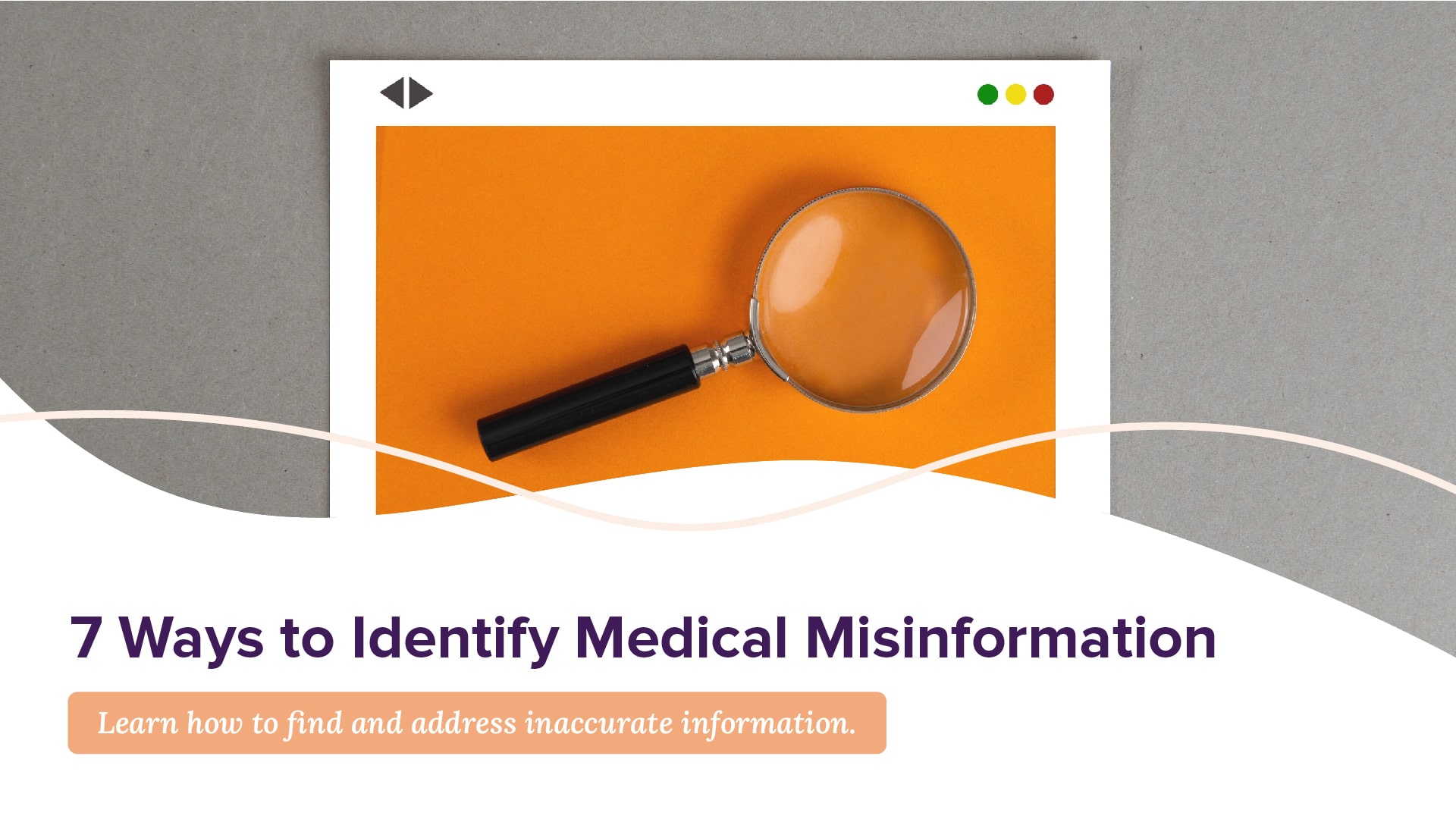The World Wide Web has increased access to information exponentially. But, it’s also created an environment where anything can be shared and anyone can posture themselves as an “expert,” which is scary when it comes to medical data.
Health misinformation can be defined as a claim contrary to the consensus of the scientific community, which allows for what is accepted as true to evolve as science advances (Swire-Thompson & Lazer, 2020). So, how can web users sort through all of the data online and discern what’s accurate and what’s actually medical misinformation?
The World Health Organization recommends taking the following steps to determine fact versus medical misinformation.
- Assess the source
You may have received the link to this information from someone you trust, but where did they get it from? In most cases, misinformation is not malinformation – meaning, information meant to intentionally harm. It’s usually a case of someone passing along something they assume is correct. Do your homework to make sure the data comes from a credible source. - Go beyond headlines
Writers are taught to draw readers in with provocative headlines. This means that statistics could be positioned in the headline out of context to cause a stir. Make sure you read all of the information before you click “share!” - Identify the author
Search the author’s name to learn his or her credentials. Is this person simply a writer with an opinion, or does he or she have a medical degree? Note that pieces that are peer-reviewed are even more credible than single authors. - Check the date
Thinking information is current is a common mistake. Always check the date of publication. Data can (and does!) change over time, especially when it involves medical research. If what you’re reading was not published recently, see if you can find something newer that states the same claims. - Examine the supporting evidence
Look for sources and citations in the article you’re reading. Follow the virtual paper trail by clicking on source links and names to be sure they are credible (see #1!). Competent writers include citations to back up their claims. - Check your biases
No one is immune to having an opinion. Consider if any personal biases you have may affect your tendency to determine if data is factual or not – or if a source is credible or not. - Turn to fact-checkers
Cross check what you find online with other proven sources, or better yet – give your contact at Carolina Speech Pathology a call!
Our team produced a self-study on the subject, and it’s available for you to work through online. Check out Managing Misinformation from an SLP Perspective to learn more on how to respond to inaccurate data when you encounter it in the workplace.
Still not sure if the information you’re reading is correct or not? Give us a call! Our team would be happy to help you weed through your findings and determine accuracy.
Wang, Y., McKee, M., Torbica, A., & Stuckler, D. (2019). Systematic Literature Review on the Spread of Health-related Misinformation on Social Media. Social Science & Medicine, 240, 112552. https://linkinghub.elsevier.com/retrieve/pii/S0277953619305465

